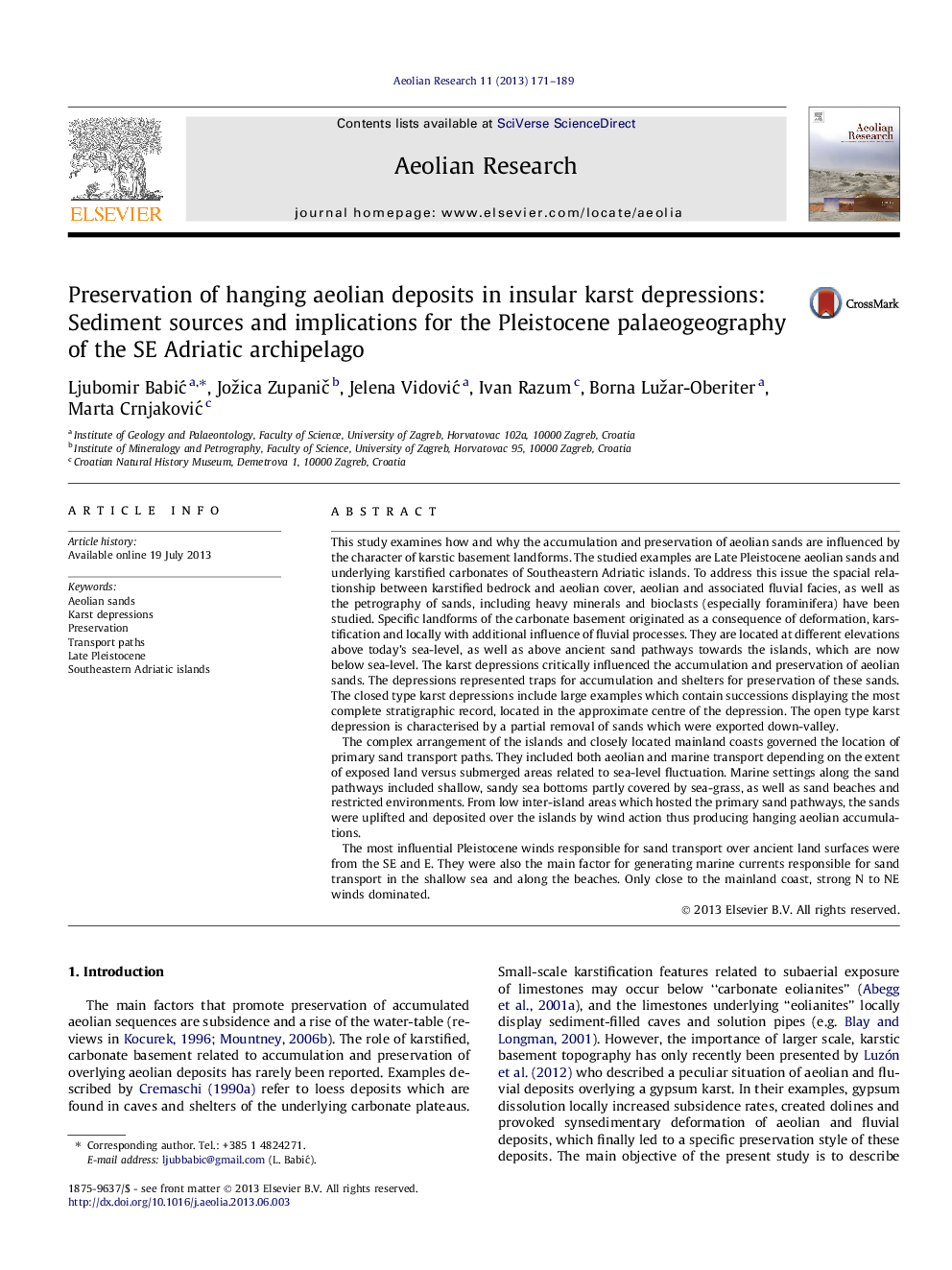| کد مقاله | کد نشریه | سال انتشار | مقاله انگلیسی | نسخه تمام متن |
|---|---|---|---|---|
| 6426455 | 1634116 | 2013 | 19 صفحه PDF | دانلود رایگان |
- Aeolian sands in closed and open karst depressions.
- Karst depressions as traps for accumulation and shelters for preservation.
- Sand transport funnelled along inter-island corridors.
- Wind-water interaction.
This study examines how and why the accumulation and preservation of aeolian sands are influenced by the character of karstic basement landforms. The studied examples are Late Pleistocene aeolian sands and underlying karstified carbonates of Southeastern Adriatic islands. To address this issue the spacial relationship between karstified bedrock and aeolian cover, aeolian and associated fluvial facies, as well as the petrography of sands, including heavy minerals and bioclasts (especially foraminifera) have been studied. Specific landforms of the carbonate basement originated as a consequence of deformation, karstification and locally with additional influence of fluvial processes. They are located at different elevations above today's sea-level, as well as above ancient sand pathways towards the islands, which are now below sea-level. The karst depressions critically influenced the accumulation and preservation of aeolian sands. The depressions represented traps for accumulation and shelters for preservation of these sands. The closed type karst depressions include large examples which contain successions displaying the most complete stratigraphic record, located in the approximate centre of the depression. The open type karst depression is characterised by a partial removal of sands which were exported down-valley.The complex arrangement of the islands and closely located mainland coasts governed the location of primary sand transport paths. They included both aeolian and marine transport depending on the extent of exposed land versus submerged areas related to sea-level fluctuation. Marine settings along the sand pathways included shallow, sandy sea bottoms partly covered by sea-grass, as well as sand beaches and restricted environments. From low inter-island areas which hosted the primary sand pathways, the sands were uplifted and deposited over the islands by wind action thus producing hanging aeolian accumulations.The most influential Pleistocene winds responsible for sand transport over ancient land surfaces were from the SE and E. They were also the main factor for generating marine currents responsible for sand transport in the shallow sea and along the beaches. Only close to the mainland coast, strong N to NE winds dominated.
Journal: Aeolian Research - Volume 11, December 2013, Pages 171-189
